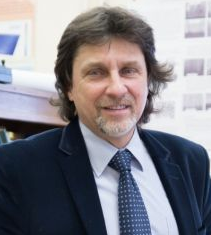| Biography | |
|---|---|
 Prof. Henrikas CESIULIS VU (Vilnius University)/EPT (JSC Elektronikos Perdirbimo Technologijos), Lithuania |
|
| Title: CHARACTERIZATION OF ELECTROCHEMICAL SYSTEMS BY ELECTROCHEMICAL IMPEDANCE SPECTROSCOPY | |
| Abstract: Electrochemical impedance spectroscopy (EIS) also called AC Impedance or just Impedance Spectroscopy is a powerful tool for characterization of electrochemical systems. The usefulness of impedance spectroscopy lies in the ability to distinguish the dielectric and electric properties of individual contributions of components under investigation. Impedance spectroscopy is a non-destructive technique and so can provide time dependent quantitative and time-dependent information about the electrode processes and complex interfaces, extract some characteristics of materials including high resistance materials (e.g. paintings, oxide coatings). Because EIS only probes the electrode-solution interface, it can be used to characterize various kinetic properties of the reaction under investigation. For example, the double layer capacitance is proportional to the electrochemically active surface area of an electrode immersed in solution, and the charge transfer resistance shows how readily the electrochemical reaction occurs. The method is particularly useful for non-destructive analysis of electrocatalysts. IMPS (Intensity Modulated Photocurrent Spectroscopy), on the other hand, also probes the solid state, and can provide information on important photoactive material parameters: rate of charge carrier – hole recombination, rate of charge transfer through the semiconductor-electrolyte interface, capacitance of the space charge layer, and more. Both techniques can be combined for suitable materials, and would offer a comprehensive characterization of the material. The practical applications of EIS are targeting for the following film types: (i) metals/alloys films electrodeposition; (ii) mechanism of corrosion; (iii) anodization of metals and characterization of oxide films and its growth by EIS including information provided by Mott-Schottky plots; (iv) underpotential deposition of metals; (v) characterization of organic films onto metals; (vi) application in development of biosensors and biofuel cells. Keywords: Electrochemical impedance spectroscopy, Intensity Modulated Photocurrent Spectroscopy, non-destructive technique. | |
| Biography: EDUCATION AND DIPLOMAS PhD: Field: chemistry, Specialization: electrochemistry; Title: Formation of Complexes and Electrode Processes in the Thiocyanate Baths for Silver- Electroplating. 1992. Lithuania PROFESSIONAL EXPERIENCE Current activities Professor at Vilnius University, Lithuania CEO of JSC Elektronikos Perdirbimo Technologijos (EPT) (since 2016) Coordinator of international project “SMARTELECTRODES” funded by HORIZON 2020 program Research and Innovation Staff Exchanges (RISE) Project coordinator of project “Design of innovative technological system for WEEE treatment” co-funded by Lithuanian Business Support Agency Former activities Research fellow at Southeastern University, Boston, USA. Photoelectrochemistry of titanium dioxide. Louisiana State University, Baton Rouge, USA. Electrodeposition of Co alloys for microtechnics. – Fulbright Fellowship, US Warsaw University, Dept. of Chemistry Poland. The Thermal Re-crystallization of Tungsten and Molybdenum Alloys with Nickel – W.Mianowski Funding for Science Support (Poland) Oregon Graduate Institute of Science & Technology, Dept. of Material Science and Engineering (USA). A Pilot Study of Deposition and Corrosion Behavior of Silver Thin Films for ULSI Circuit Interconnect – Fellowship from National Research Council, U.S. | |
